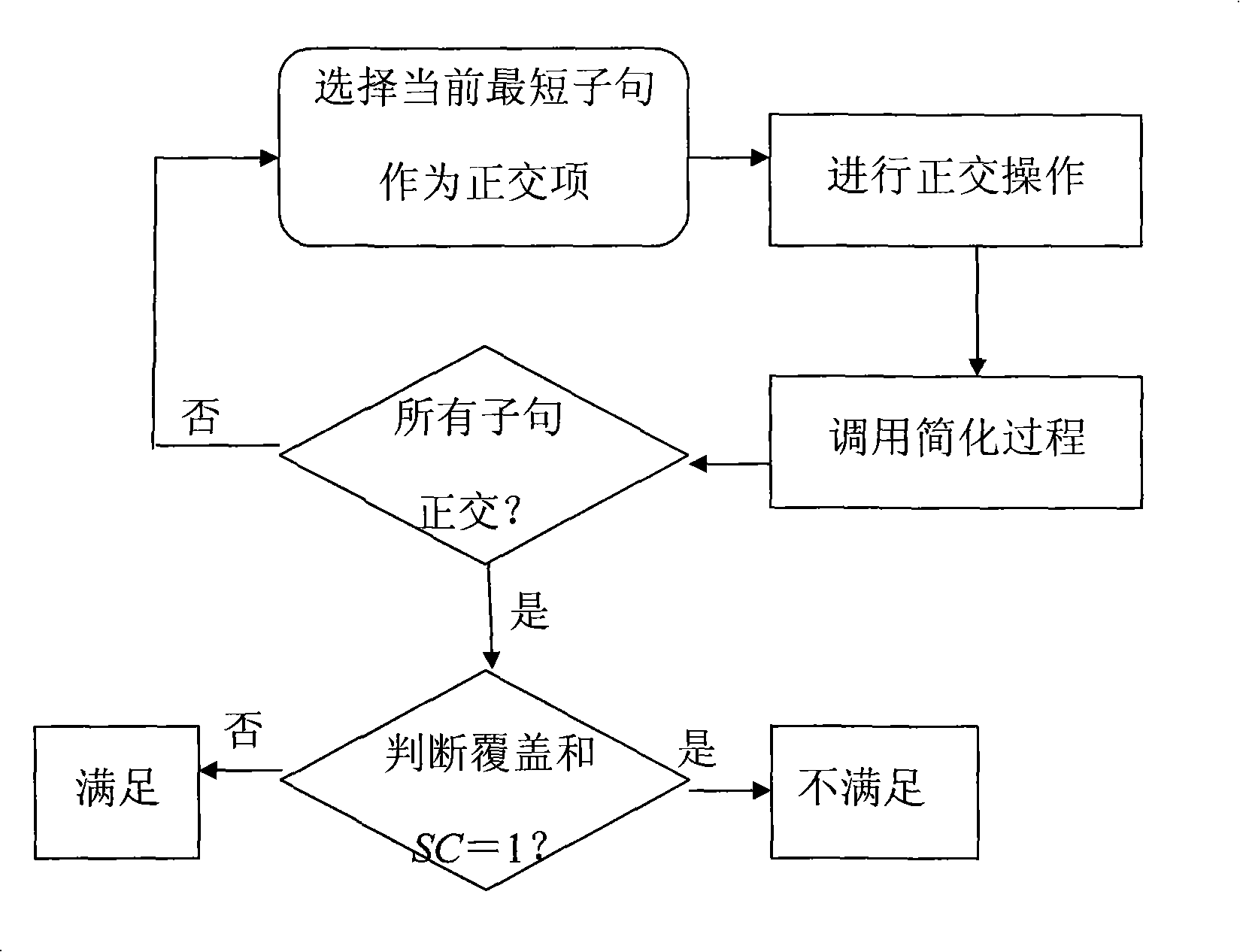Orthogonalization algorithm for solving satisfiability problem
A satisfying and orthogonal technology, applied in the field of formal verification of VLSI, which can solve the problem of excessively increasing the scale of learning clauses, and achieve the effect of high speed, high efficiency, and speeding up the simplification process.
- Summary
- Abstract
- Description
- Claims
- Application Information
AI Technical Summary
Problems solved by technology
Method used
Image
Examples
Embodiment Construction
[0043] Combining the clause orthogonalization process and 4 kinds of simplification techniques, the present invention provides a new algorithm utilizing the orthogonal method to solve the SAT problem, and its flow chart is as attached figure 2 shown.
[0044] In order to illustrate the implementation process of the algorithm of the present invention, an example is given below.
[0045] F= (x 1 ∨x 3 ) ∧ (x 1 ∨x 2 ∨x 3 ) ∧ (x 1 ∨x 3 ∨x 4 ) ∧
[0046] (x 1 ∨x 3 ∨x 4 ) ∧ (x 1 ∨x 2 ∨x 3 ∨x 4 ) ∧ (x 3 ∨x 4 ) ∧ (x 3 ∨x 4 )
[0047] The SAT question consists of 4 variables and 7 clauses, and the coverage of each clause on the Karnaugh map is as attached image 3 shown. It can be seen that they have many overlapping parts.
[0048] Next, it is orthogonalized using equation (2). First select the shortest clause as an orthogonal item for orthogonal operation. Here the first clause x is selected 1 ∨...
PUM
 Login to View More
Login to View More Abstract
Description
Claims
Application Information
 Login to View More
Login to View More - R&D
- Intellectual Property
- Life Sciences
- Materials
- Tech Scout
- Unparalleled Data Quality
- Higher Quality Content
- 60% Fewer Hallucinations
Browse by: Latest US Patents, China's latest patents, Technical Efficacy Thesaurus, Application Domain, Technology Topic, Popular Technical Reports.
© 2025 PatSnap. All rights reserved.Legal|Privacy policy|Modern Slavery Act Transparency Statement|Sitemap|About US| Contact US: help@patsnap.com



